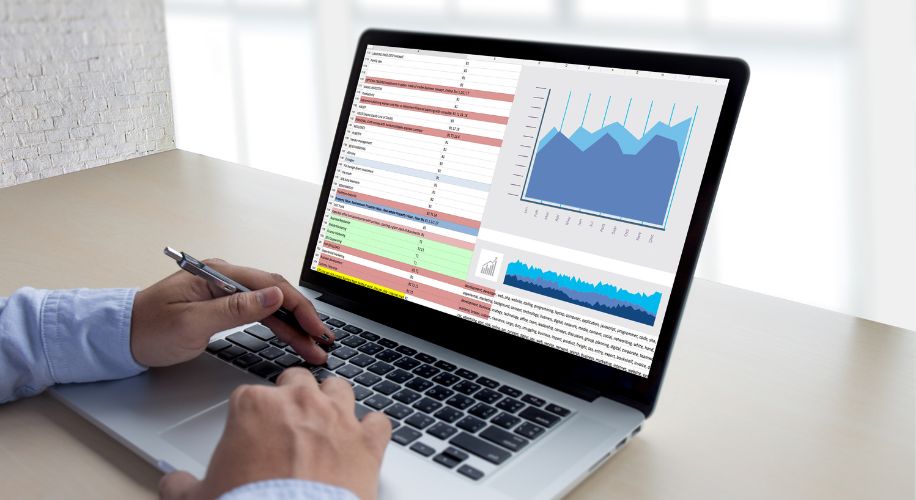All call center managers and executives have one pressing goal – to reduce the cost per call and lower the overall call center outsourcing cost. This goal shouldn’t be achieved at the expense of the quality of customer service.
How Is Cost Per Call Calculated?
Cost Per Call is a call center metric for the total cost associated with handling all contacts/calls during a specific period of time. This KPI is used by the call center management for assessing the efficiency of the call center.
In order to calculate cost per call, the first step is to define the time period for which cost per call is to be calculated. This period could be an hour, day, month, quarter, or year. Then, determine the total operating budget of your contact center, which normally includes HR and recruitment costs, employee wages, benefits, and training, overheard expenditures, IT expenses (internet cost, hardware, software licensing), and administrative expenses. Once you have the sum, divide the total cost by the total number of calls within the same period. The equation will look something like this: Cost Per Call=Total Costs/Total Calls
Tips to Reduce Cost Per Call
Here are some ways to reduce cost per call in your call center without missing out on the opportunity of fostering customer relationships and reaching and exceeding sales goals.
Coach and Train Your Agents
The most appropriate way to reduce cost per call and improve the quality of your omnichannel contact center service is to invest in the training of your agents. Your agents must have sufficient knowledge, resources, and skills to address the customer’s needs.
One way to ensure this is by hiring agents who are suited for the job and another way is to train them based on their performance and the nature of work, of course. Well-trained agents will ensure they improve first call resolution, reduce handle time and improve the quality of the service. They will also contribute towards reducing the number of escalated calls and callbacks and lowering the overall cost per call.
Embrace Omnichannel
Lots of organizations have now supported omnichannel engagement, which entails using different channels to interact with the customer. The key is to ensure that the customer is easily and seamlessly able to navigate between the touchpoints as they make a purchase. A study by Aberdeen Group research says that Omnichannel support engagement has the power to offer a 9.5 percent annual gain in sales compared to the companies that only achieved 3.5 percent success with multichannel support.
The fact that customers may contact the call center of an IT support company still remains relevant, but customers are also likely to get support via social media, live chat, and email.
Improve the First Call Resolution Rate (FCR)
First Call Resolution rate measures the ability of a business to resolve a customer’s query, problem, or need the very first time when they reach out for that issue. A successful resolution means that agents won’t have to follow up with the customer.
Optimizing the FCR rate means you will have to empower your agents to solve the customer’s problem within the first call. If a customer won’t have to call for the same issue, again and again, this will reduce the cost per call and improve customer satisfaction at the same time.
Monitor Calls
Another effective way to reduce the cost per call is to maintain the quality of calls, of course, and the best way to achieve that is to monitor live calls. The quality assurance teams at call centers are there to perform this job. They play a significant role in improving customer interaction, streamlining communication procedures, and inspiring staff to collaborate to meet company objectives.
As calls are monitored, call center managers and supervisors can offer agents constructive criticism, help them in raising the standard of their calls as a whole and maximize their handling time. A competent agent won’t unnecessarily hold up calls or keep customers on hold all the time. And if that’s happening, the QA team can address that. In other words, with call monitoring, call centers’ efficiency can improve and the cost per call can be reduced at the same time.
Invest in Cloud-Based Call Center Software
A cloud-based call center software can help save offshore call center costs in more than one way. First, it will reduce the need for investing in hardware such as traditional telephones and data storage units. Agents will use Computer Telephony Integration (CTI) which means they can work from any browser and access the data stored in the cloud thereby reducing the need for spending money on maintenance.
Secondly, migrating to a cloud-based call center solution will reduce the call center outsourcing business cost as well. A cloud solution is highly scalable. You can increase the number of agents as call volume increases and cut them down during off-peak times. This flexibility keeps call centers prepared for anything without having to worry about adding to the cost per call and the overall call center cost.
Use the Call Back from Queue Feature
Queued callback feature allows prospects to opt out of the callback option which reduces the wait time. Giving your callers the option of hanging up and requesting a callback can also reduce the cost of waiting in a lengthy queue. In other words, investing in a queued callback feature can lower the cost per call as it can improve customer experience and reduce the call abandonment ratio.
Whether you are an In-house call center or an agency that delivers contact center outsourcing solutions, these tips will help optimize the operations and cut back on the cost per call significantly.




